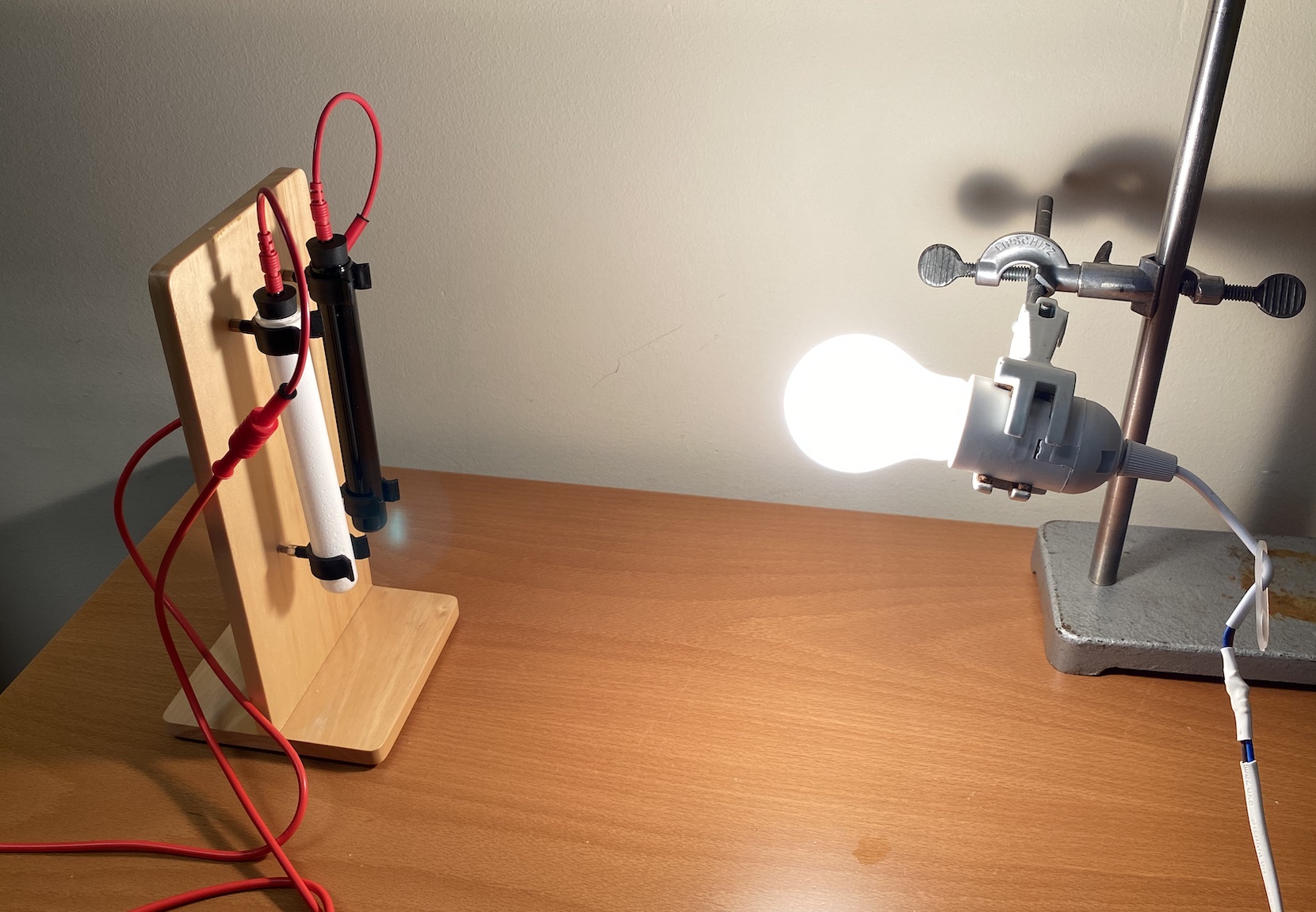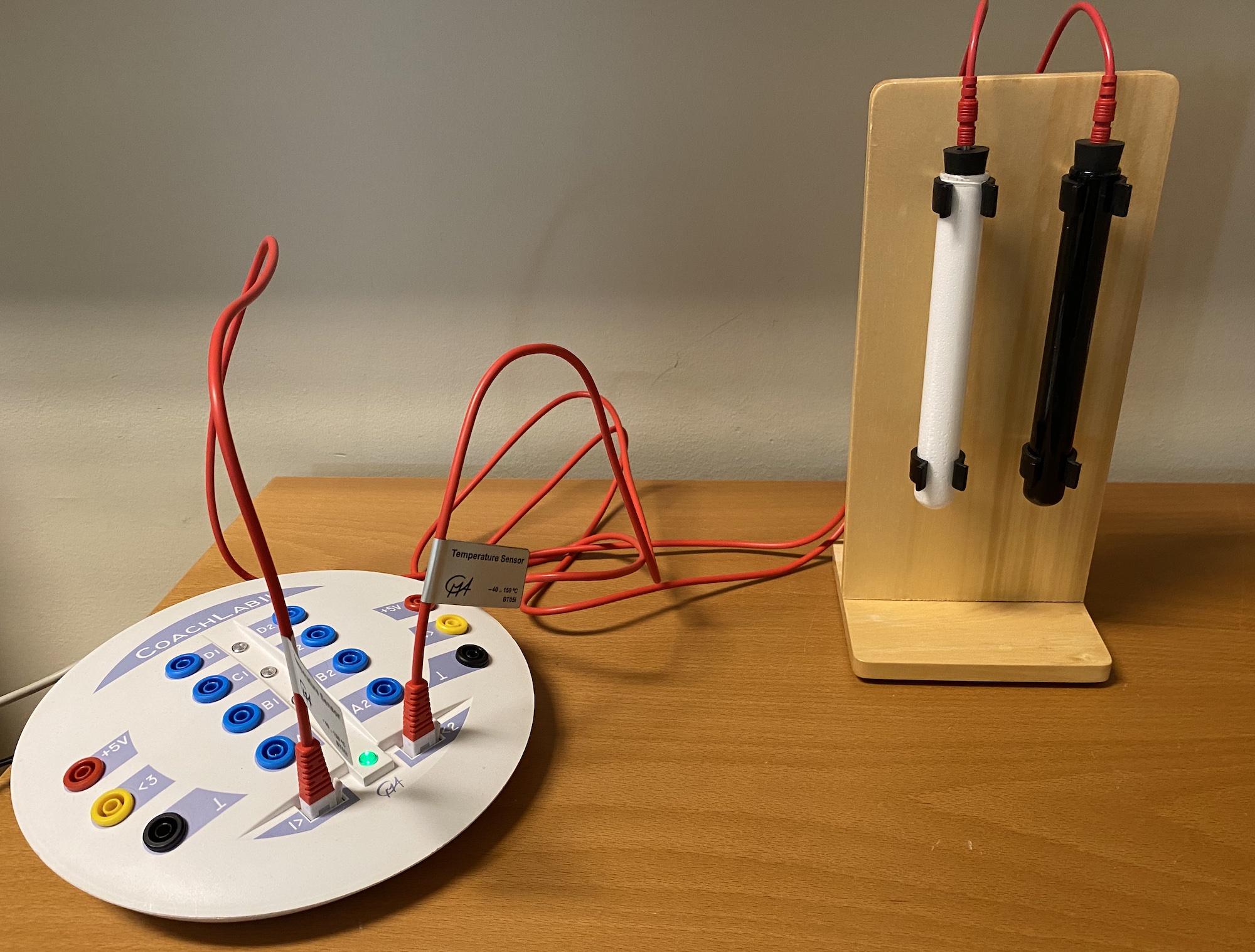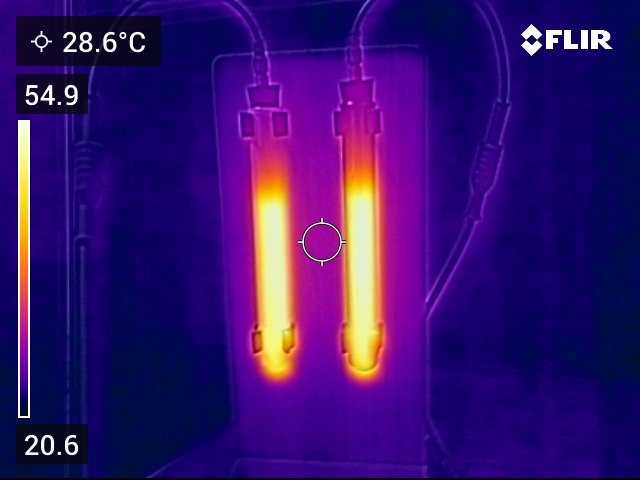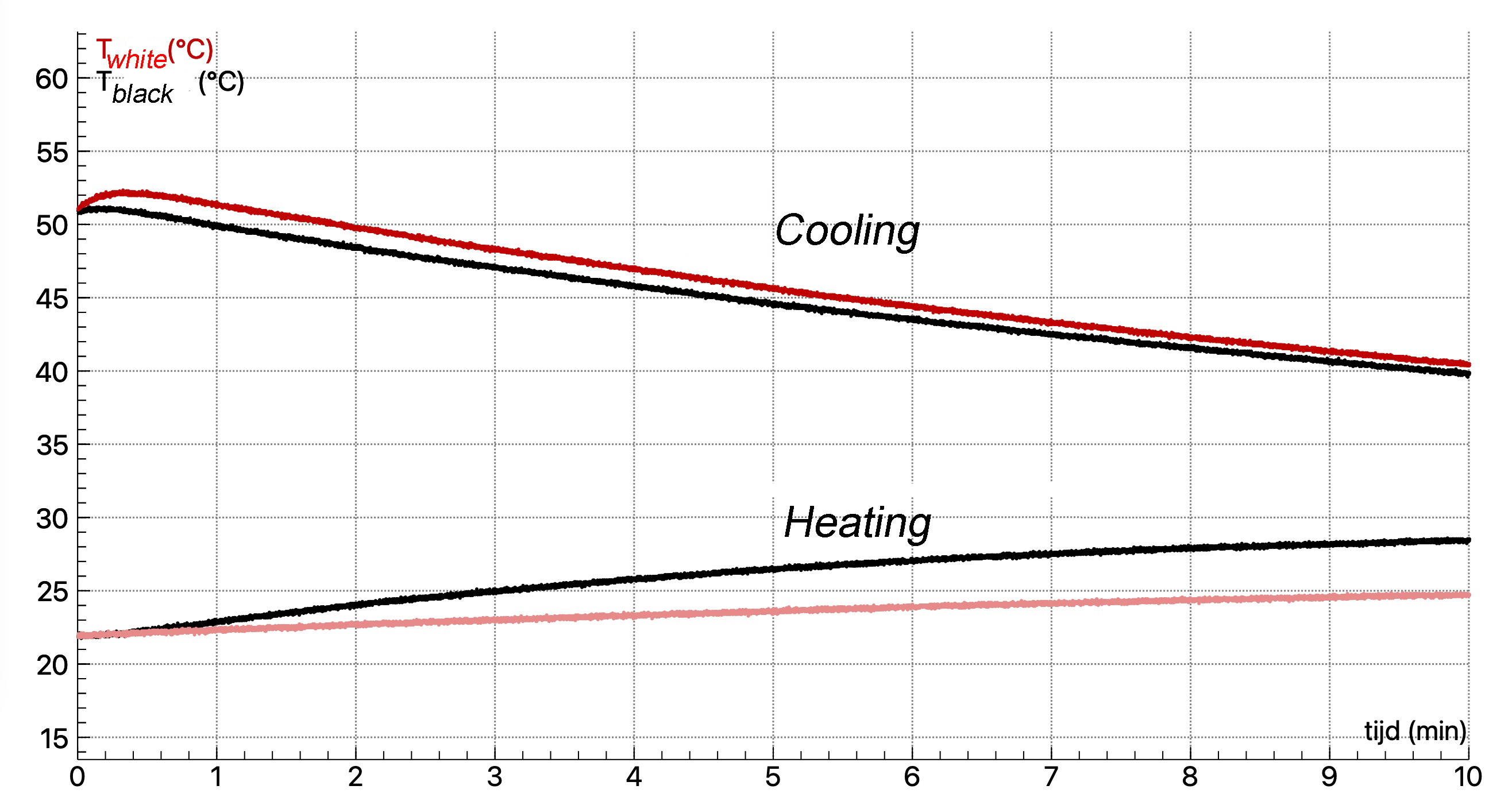18.10. Black and white#
Differences between heating and cooling
| Author: | Norbert van Veen |
| Time: | 15 - 30 minutes |
| Age group: | Lower & Upper secondary |
| Concepts: | Heat, radiation, absorption |

Fig. 18.23 The white and black test tube in the holder both heated by the light bulb.#
Introduction#
A simple demonstration of heating up and cooling down a black and a white test tube. Which tube heats up fastest will be correctly predicted by most students. However, for cooling down, many students will be guided by the idea that “heating up faster implies cooling down faster”. Does this holds true?
Equipment#
White and black test tube in a holder (e.g. surrounded with white and black paper)
A light bulb (> 40 W) or a high-power halogen spotlight
Two temperature sensors
Measurement software (for Coach we provided the script)
Two rubber stoppers with hole
Kettle
Measuring cylinder to measure 20 mL of water

Fig. 18.24 The test tubes filled with hot water and temperature sensors connected to a CoachLabII+#
Preparation#
Part 1#
Place the light bulb about 20 cm away in front of the test tubes. Insert the temperature sensors through the rubber stoppers and place them in the test tubes. Connect the temperature sensors. (Automatically) measure for 10-minutes.
Part 2#
Heat water in a kettle. Pour the hot water into the measuring cylinder. Pour 20 mL of water into each test tube. Put the temperature sensors in the test tubes.
Procedure#
Part 1#
Introduce the experiment. You can explain students absorption of light by different colored objects.
Let students predict in which testtube the air warms up fastest and why.
Discuss the results with the students.

Fig. 18.25 The cooling test tube tubes radiating equally in the infrared.#
Part 2#
Explain that you will now fill the test tubes with hot water and then measure the temperature when cooling.
Let students predict in which test tube the water cools down fastest and why.
Perform the test.
Discuss the results of the test with the students.
A question that can be asked to assess students’ understanding: Does it matter what colour the radiators in a house are? Why (not)?

Fig. 18.26 Heating and cooling of the two test tubes. When cooling down, the white test tube is slightly warmer, but the cooling curve is almost identical to that of the black test tube. To clearly show the difference of cooling, the (\(T\),\(t\)) graph of the white tube is started slightly earlier.#
Physics background#
In the infrared, both white and black paint will absorb the same amount of radiation. Since the black test tube absorbs more radiation in the visible part, it will rise in temperature faster.
When objects start emitting in the IR-spectrum, it is quite a different story. The emissivity of an object determines how well it can emit IR-radiation. Since the emissivity of white and black paint is almost the same, they will emit the same amount of IR-radiation and therefore cool down equally fast [].
Tip
You can video-stream with the FLIR-ir camera so that you can also clearly see that the test tubes differ in temperature in part 1 and are and remain approximately the same temperature in part 2 (see Figure 18.26).
Use a halogen spotlight or a lampshade to focus the light better otherwise you will blind the students and they will not see the test as clearly.
